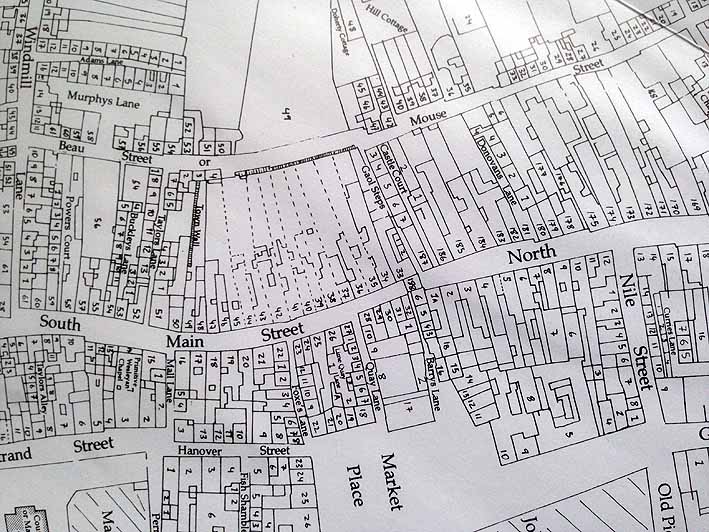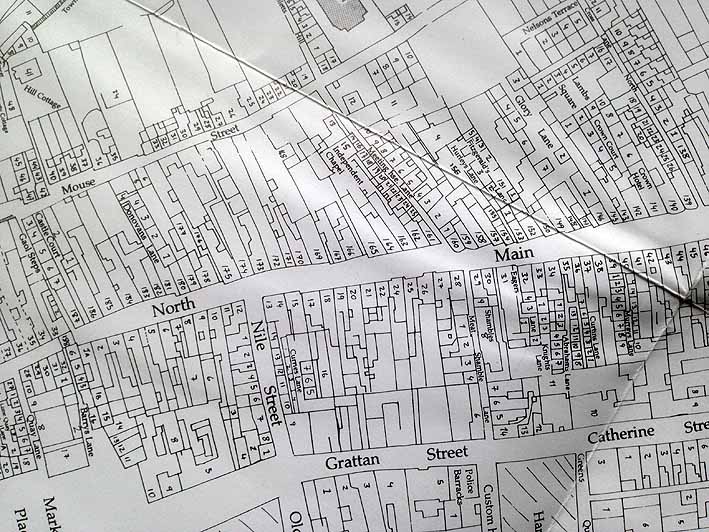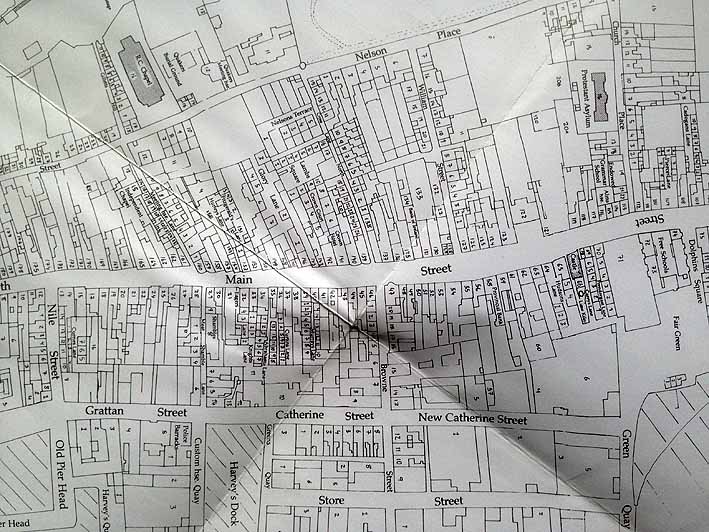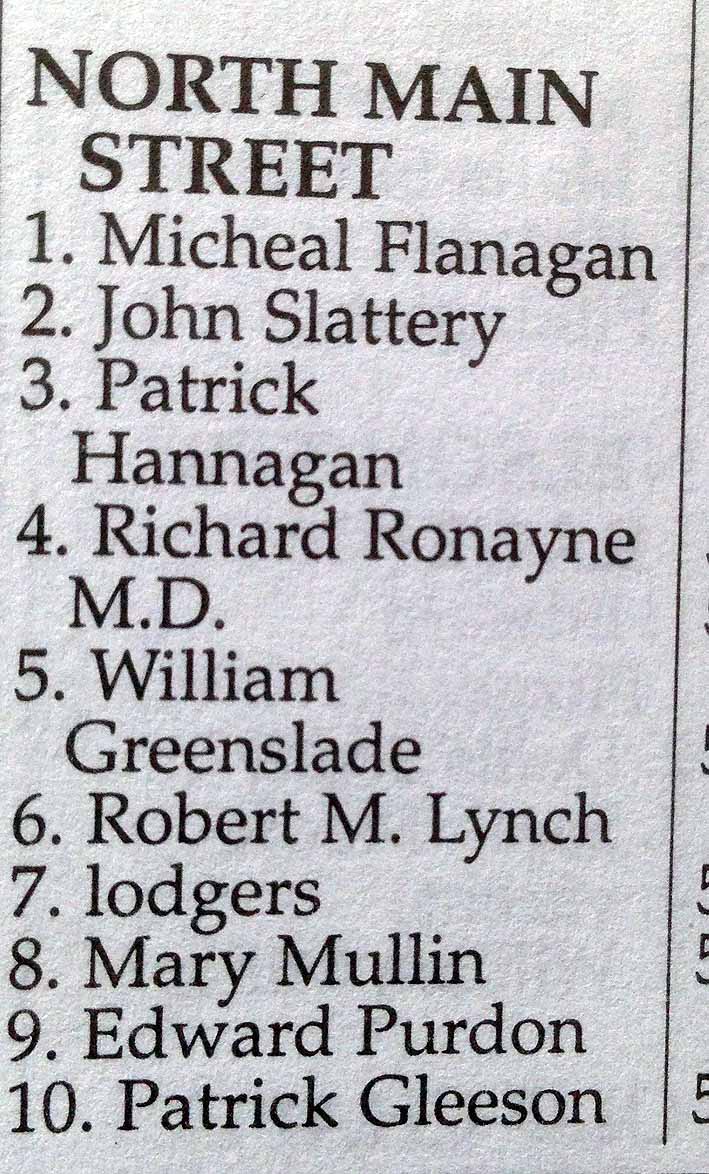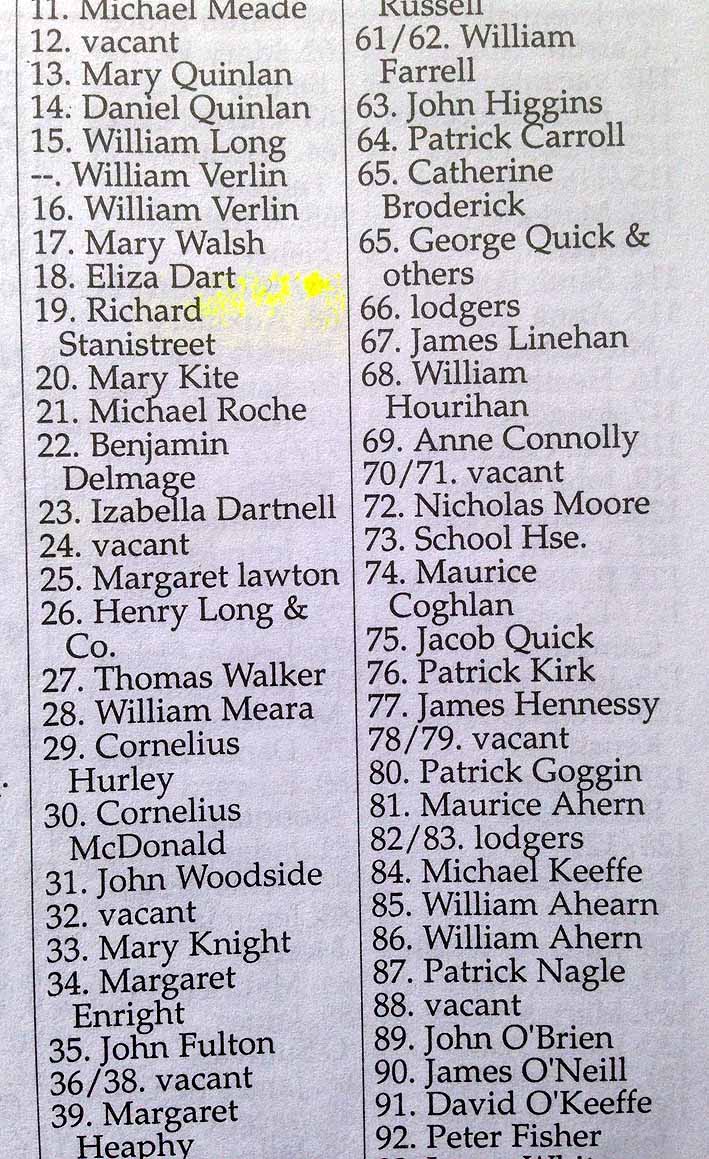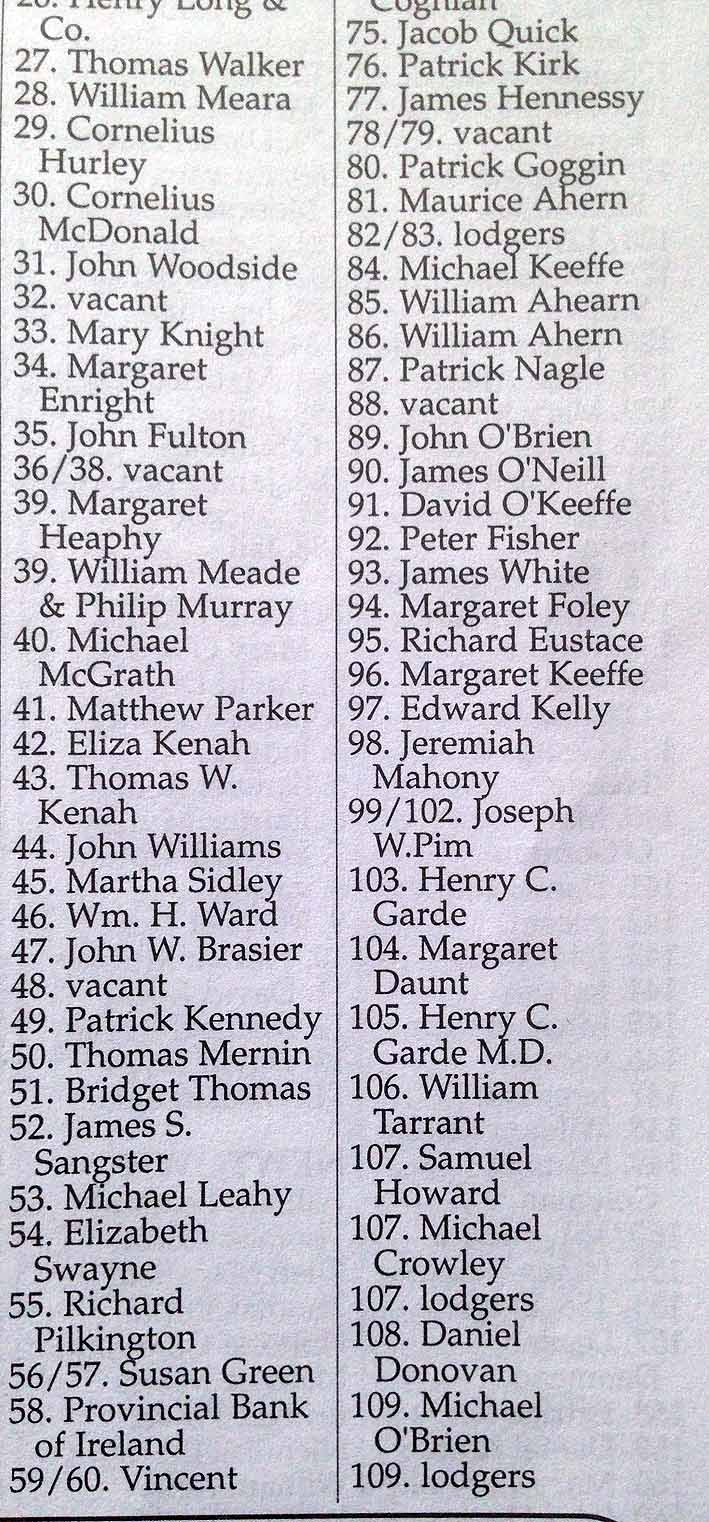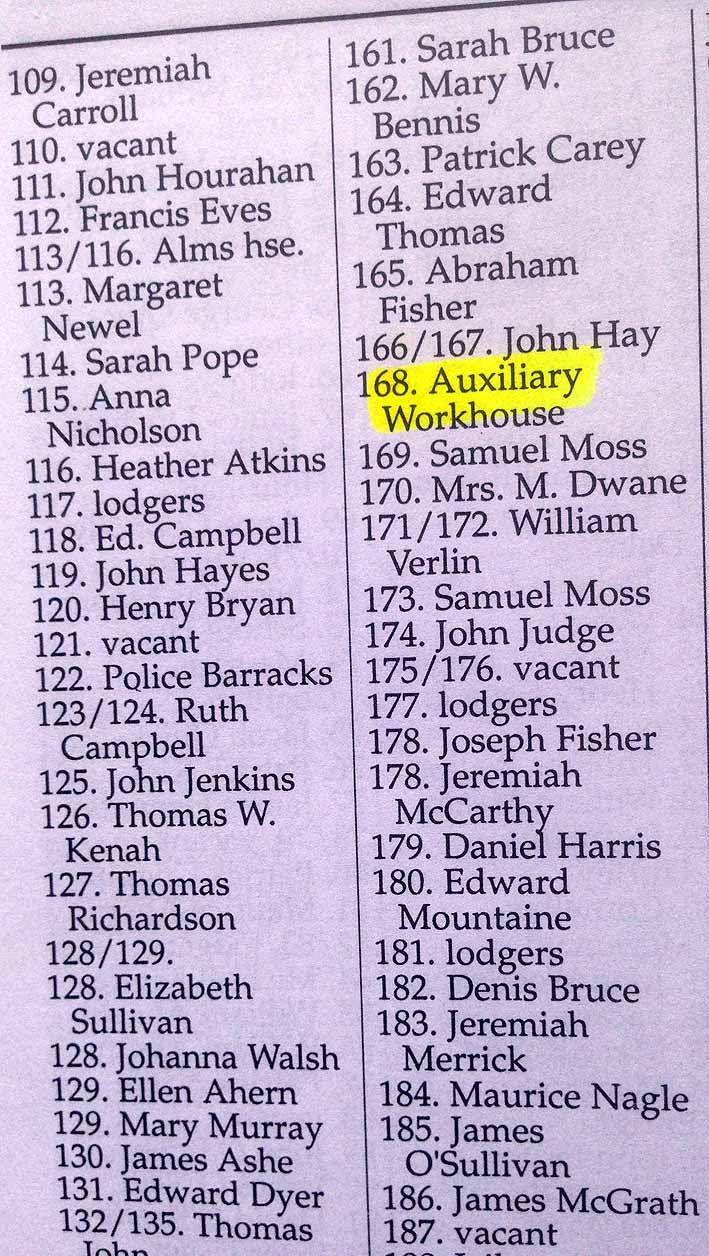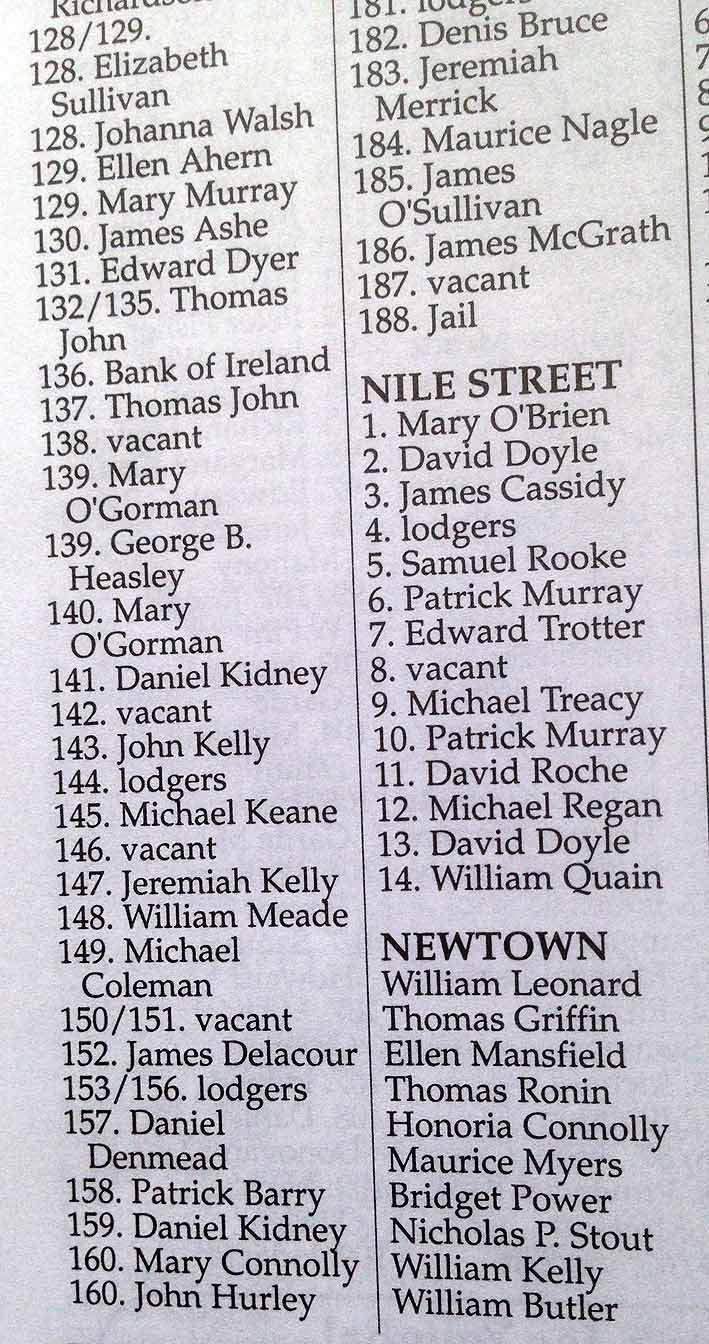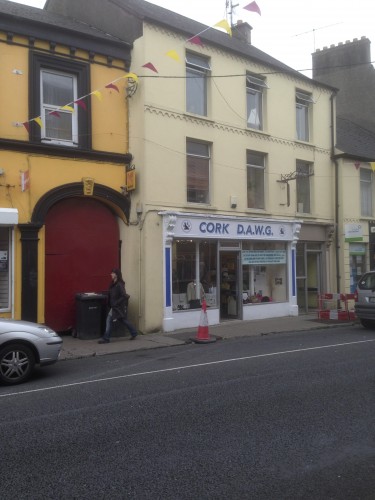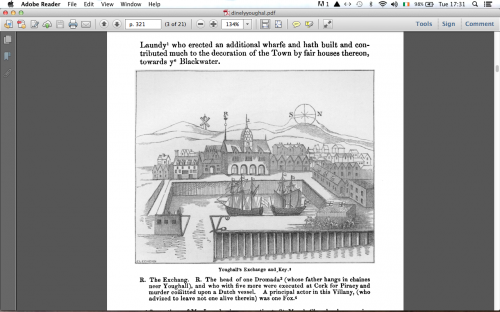- Searching for family roots is a rewarding , if often frustrating, piece of work. This section is to help you if you think you may have family roots in Youghal. There are a number of “pay per view” websites but – initially – we will look at what is available free of charge. This page will grow and grow in the coming months – but we would love to hear from you, in the meantime, if you are looking for Youghal roots.
If this is a subject that interests you there are several courses both on line and on campus which will help you develop an expertise .
Best suggestion – email/snail mail/ phone the Tourist Office, tell them what you want to find out, when you might be visiting – they are very helpful and can set things up for you – site of family home, possible contacts etc. This avoids wasting your time. No point in reinventing the wheel – they have been down your road many times and know the way!
Local libraries are PHENOMENALLY HELPFUL! Just ask!
Free Services – Just Google the reference!
There are Census records for 1901 and 1911. ( Census.ie)
There is the Griffith’s Valuation for the late 1850s. (AskaboutIreland.ie)
There are lists of land owners .
There are several trade directories – Slaters, Pigotts, Guys.
Here is one of them : Just click on the 1881 -2 link and it downloads for you.
Youghal1881 2
There is the Lewis Topographical Directory.
There are some Electoral Registers ( men only!)
For the record – FamilySearch.org is a website which offers free listing of names of births marriages and deaths all over the world It will not give you an original facsimile of a document but you do get a reference to help you get the document. This site is getting bigger and bigger – so check back from time to time, there may be new features.
Starting Off
In the Irish Roots magazine , no.102, 2017, Sean J.Murphy offers excellent advice on searching the new Online Deeds Facility in the Registry of Deeds. He also offers a free PDF version of A_Primer_in_Irish_Genealogy_2017_Edition which is very helpful. He includes blank charts etc.
First of all you need to do a bit of work yourself – start with you , your parents – maybe your mother’s maiden name, your uncles, aunts, grandparents ( again adding maiden names if available). If you know any years associated with these names, write them down. If you know any places associated with these names write them down. Birthdays, death days. Nicknames, anecdotes, heirlooms.
We have some ( not all) School records from the Christian Brothers School in Youghal. If you have a date of birth you might be lucky!
For Youghal people – you might also consider possible Waterford connections and , as it happens, there is a beautiful, FREE, booklet called “Sources for Family History in Waterford County” -it explains the lot – census records, civil records, church records, Tithe applotment books, valuation records, burials, estate papers, workhouse records, local authority records etc. Lots to get you going and it is FREE !
Census Documents
In Ireland there are two census years available to search, free of charge. 1901, 1911.
You can select either. If you have a family name, a place name, a street name – anything like that can be selected. If it is easy to search. You can look at original documents , you can see a certain amount of detail, find out who the neighbours were etc. Sometimes , even if your family moved away, a neighbouring family can still be there with insights you might appreciate!
Be careful with house numbers – they change from year to year!
Books to help you research your Youghal roots:
One vital piece of information for searchers is that street names change , numbers of houses change, and some smaller lanes and streets disappear. There is a wonderful book “the Historic Town Atlas of Youghal”, published May 2015 by the Royal Irish Academy which gives all this information, the development of the town, the changes, the names. It also lists all the sources where you can find information. Start there ! It costs €30 but EVERYTHING you need to know about Youghal is probably mentioned there or details in the INDEX of where to find the information. In family searches planning is vital, time saving and helpful.
There are three books to help you find your roots :
“Youghal Family Roots, Exploring Family Origins in Youghal” by Noel Farrell is a privately published book but it is available from the publisher!
Noel Farrell has several other towns in the series. He has to be contacted directly at Park Road, Longford. There are copies of this book in the Youghal Library, the Tourist Office so …. visit or write. The book does contain the Griffiths Valuation Map of Youghal in 1851 in A3 size – but a lot of the information is freely available already ( the Census lists, Griffiths etc.). If you are not “into computers” then this has the 1901 and 1911 census lists in a street by street format.
“Tracing your Irish Ancestors” by John Grenham, now in its 4th Edition is THE BIBLE for family search, easily available and quite comprehensive. A bit dear but worth it. John Grenham also has a television series and does a weekly column in the Irish Times.
“Tracing your Cork Ancestors” by Tony McCarthy and Tim Cadogan is probably half way between the first two books, easily available, readable and about half the price of Grenham’s book.
“Byrne’s Dictionary of Irish Local History” by Joseph Byrne explains words which might not be obvious to us any more. So if you see “tithe fish” in a book and do not know what it means Byrne is your man!
Youghal History – some general readers
The Council Book of the Corporation of Youghal is available on line. FREE
This is the link : http://www.archive.org/stream/councilbookcorp01caulgoog#page/n138/mode/2up
Canon Haymen also has a book called the “Annals of Youghal” .
Michael Hackett has, we think, 17 books on the history of Youghal.
Tom FitzGerald has a little book called “An A to Z of Youghal”.
Alicia Saint Leger has a little booklet “Youghal – Historic Walled Port” , beautifully illustrated, concise information.
Kieran Groeger has “Youghal Heritage Trail ” – free on iPads but the print version can be bought from the Tourist Office. This is called “The Little Book of Youghal”. There is also “Youghal in old photographs” by the same author, printed by the HistoryPress,
